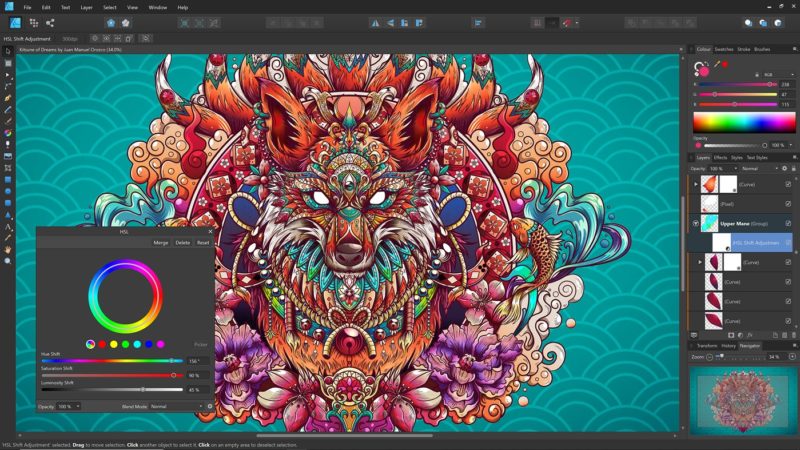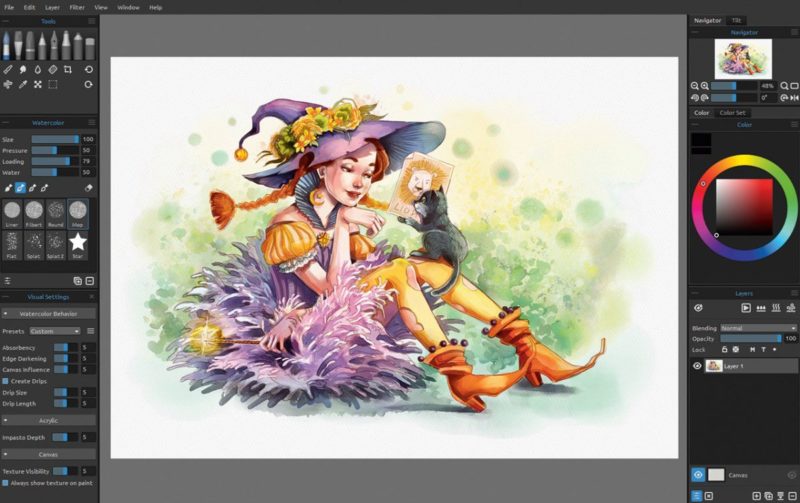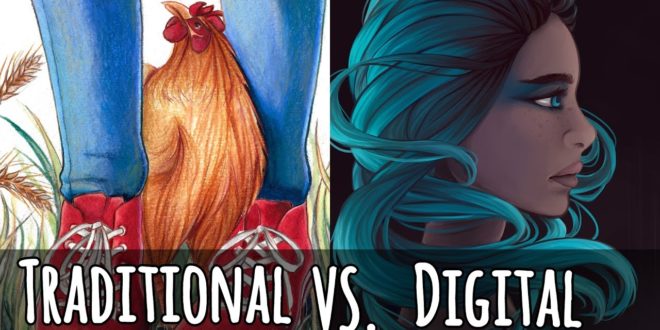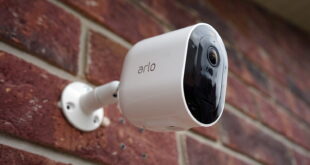The popularity of digital painting has been growing steadily over time. You have certainly heard of specific computer programs with which you’re able to give a photograph of the appearance of being painted in oil, watercolor, graphite, charcoal… Moreover, let’s say that, when you hear about computerized art, you always think about this type of program. It probably sounds like a magic wand that makes every colorful wish possible. This article will serve to at least try to explain the differences between modern and old, good, traditional drawing. It’s a topic that has been debated pretty much in recent years due to the incursion in the artistic market of computer tools, such as Photoshop, Corel, and Wacom digitizing tablets.
Some are in favor of the modern alternative, thinking that it brings the future to the field of art, and another of traditional painting… and others who like both. It’s true that each one has its pros and cons, understanding cons as something, well, let’s say “improved.” This doesn’t mean that the older version has no cons – but that the new one has brought us more convenient characteristics for a certain part of the industry.
What did the digital times bring?

Digital painting, for those who still don’t know it, is an art form in which traditional techniques are demonstrated using tools in computer software, or a digitizing tablet and a pen. The artist uses certain techniques to create a painting on the computer. The programs include brushes digitally designed to represent the regular style as with oils, acrylics and watercolors.
So, what did technology make of our old, good ways and how did this brought a change? Let’s talk about some good sides.
Some artists who tend to be fond of contemporary solutions might find it tempting to use an actual program just because it has a palette of a million colors to choose from, and the ability to recover errors in an instant. Modern times brought softwares that do everything automatically. The only thing you need to set first is to upload a photograph and choose the technique of the effect you want. Would it be watercolor? Oil? Graphite? After parameters such as color, brush size, luminosity or noise are adjusted, the program does the rest of magic. And it’s for sure that a couple of decades ago only a few people would predict that this would happen.
These applications faithfully reproduce the dynamics of the process that includes conventional techniques – the only thing is that the result won’t be physically shaped if we can say so. Just as if it was pharmacy – within this type of app there’s something for everyone. Not for every artist in history, there was a possibility to combine so many different things and set them by their own wish.
It’s easier to make mistakes using the software

Technological improvement actually made us see the difference. Color spots can simulate quite accurately the way our brain sees the world. Paintings can be photorealistic, but they can also approach realism through a variety of other styles. Many traditional artists still rather choose to be physical with their works – they’ll use hands, feet, clothes and anything else to obtain a certain effect or texture. They like to mix the colors with a real spatula, use means to adjust them, apply them to a real surface and treat it until it ends with great satisfaction. They especially appreciate learning from the mistakes made and correcting them skillfully – not by selecting the “undo” button in a program, but by hand. But let’s admit – sounds much better if you can just select that little arrow and go one step back instead of re-doing it all. Less effort, better effect. Or at least fans of contemporary techniques would say so. They don’t need anything except their own hands and pen sliding, nor there’s need to worry if the color will eventually look like they imagined. It’s all accessible there, only a click away.
And what about the professional needs?

These applications are nowadays often used for work and school projects or commercially for graphic designers. Artists who want a practical relationship with the means and their smells, canvases and their textures remain faithful to their craft, but the ones who went through a certain modernization simply can’t imagine their everyday activities without the display loaded with different kinds of possibilities. Some of them make lovely art and sell it so that their pictures can embellish the homes around the world (if you find this interesting, you can easily learn more here).
Freelancing platforms are loaded with individuals who make their own little masterpieces and earn amazing amounts of money by taking advantage of the apps and their features. Much easier than creating something and then having a hundred and one trouble while computerizing it. However, if you decide to do it yourself, you can always click here and find useful guides on how to draw a human face, step by step.
Less time and less money

This type of painting provides the possibility of creating much more work in less time because thanks to the software we can do and undo as many times as we want. And not only that: also to create layers to test, adjust the color and modify the shapes drawn – all this on the same canvas. It also saves us the drawing and painting material that we need in its convenient form, although the initial investment is much greater. Putting aside some money for a computer purchase, tablets or a specific software might sound too much for the beginning. But once done, the update of these tools is less, as you basically already have everything you need.
Being able to work on an already digitized illustration saves us time and allows us to work much more comfortably with any client anywhere in the world. Doing this with an original work, depending on the size, is an inconvenience. With the era of the network in full swing, we can share the work process with other colleagues who are anywhere in the world practically in real-time.
But….

A digital painting program does nothing alone. Everything, absolutely everything, needs to be done step by step, stroke by stroke, and brushstroke by brushstroke.
Mastering this technique isn’t actually a piece of cake as it seems to some people. It requires a lot of practice and hours on the computer, which doesn’t seem like a great option for one’s sight. Also, a continuous search for new applications and tools that will serve us better, new plugins, effects, filters, brushes, motifs or textures can be quite exhausting and make people just give up and go back to the roots. And, let’s not forget, since it’s a computer technique, it only exists on the computer or a similar device until it’s extracted. Printing systems are required for this and these are limited.
Some people believe that this option takes away the integrity of a real painting made by a truly skilled artist. According to their opinions, there’s no real artistic talent to apply the techniques that applications programs are imitating. And this could also be the way technology made an impact on the typical art forms.
After analyzing the main characteristics of each type of art, it’s absolutely possible to reach a conclusion. Both types of art have contributed to the construction of the artistic culture that we know today. As we mentioned, each one of them has its own good and bad sides. But, after all, artistic skills are needed in both. Many times artists learn the traditional style, gain experience and move to digital art. Rather, they’re all great artists because they know how to adapt to different circumstances and are able to capture and disseminate their creations regardless of the medium. It’s for this reason that the decision of what art style to use depends solely and exclusively on each artist, according to their tastes and passions.
 Comeau Computing Tech Magazine 2024
Comeau Computing Tech Magazine 2024




